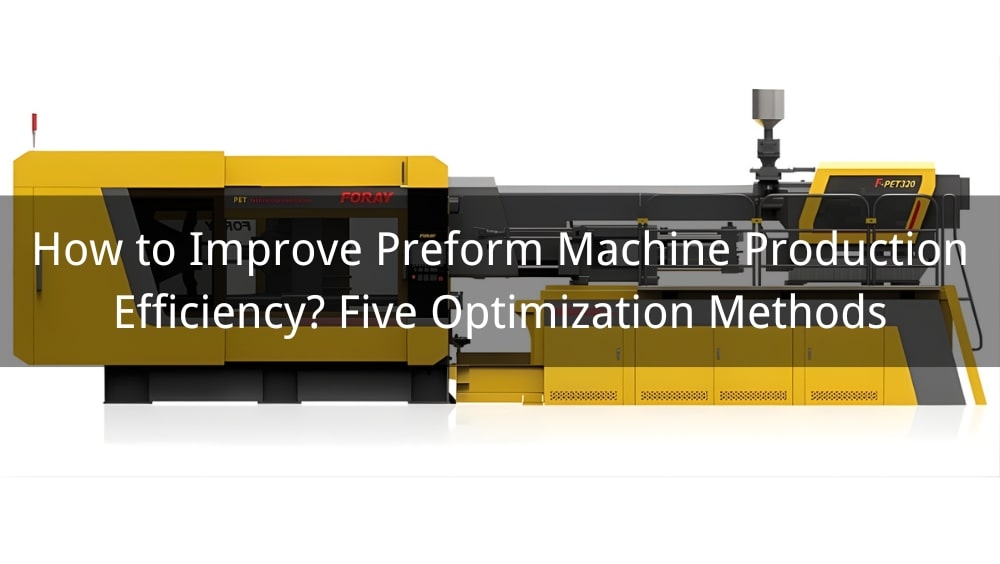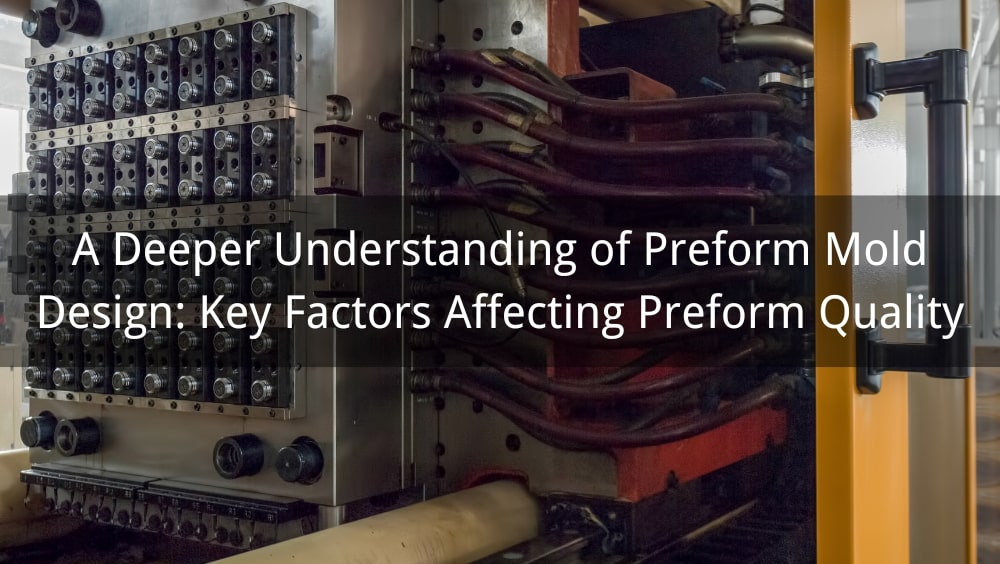Plastic bottles are everywhere. From holding our water to packaging our cleaning products, they’ve become an essential part of our daily lives. But have you ever stopped to think about how these ubiquitous containers are made? Understanding the plastic bottle manufacturing process not only gives us insight into the world of industrial production but also helps us make more informed choices as consumers. In this article, we’ll take you through the fascinating journey of how plastic bottles are created, from raw materials to the final product, exploring the different technologies, environmental impacts, and future trends in the industry.
The story of plastic bottles begins with the invention of plastic itself. In the early 20th century, scientists began experimenting with synthetic materials, leading to the creation of the first types of plastic. These materials were initially used for military and industrial purposes, but as their versatility became apparent, they soon found their way into consumer products. The development of Polyethylene Terephthalate (PET) in the 1940s revolutionized the industry, providing a lightweight, durable, and recyclable material that would soon dominate the world of packaging.
The first plastic bottles made from PET hit the market in the 1970s, offering a lightweight alternative to glass bottles. Their ability to be molded into various shapes and sizes, combined with their durability and transparency, made them an instant hit with manufacturers and consumers alike. Over the decades, advancements in technology have allowed for the production of more efficient and environmentally friendly bottles, meeting the growing demand for sustainable packaging solutions.
The rise of plastic bottles has had a profound impact on the packaging industry. They’ve enabled the mass production of affordable, convenient packaging, transforming industries such as beverages, personal care, and household products. However, this convenience has come with environmental challenges, leading to a growing focus on recycling and sustainable practices within the industry.
Different types of plastics are used in bottle manufacturing, each with its unique properties. The most common types include:
PET stands out as the most commonly used plastic for bottle manufacturing. Its lightweight nature makes it easy to transport, while its strength ensures that the bottles can withstand the rigors of production, shipping, and daily use. Moreover, PET is fully recyclable, making it an attractive option in today’s eco-conscious market.
Each type of plastic has its advantages and disadvantages. PET offers clarity and recyclability but may not be suitable for products requiring chemical resistance. HDPE provides strength and durability but lacks the transparency of PET. PVC, though versatile, is less environmentally friendly and is increasingly being replaced by more sustainable options.
The manufacturing process begins with the procurement of raw materials. Plastic resins, primarily PET, are sourced from suppliers and stored in large silos. These resins are small, pellet-like pieces of plastic that are the building blocks of the bottles we use every day. The quality of these raw materials is crucial, as it directly affects the final product's strength, clarity, and safety.
Injection molding is the first major step in transforming raw materials into bottles. In this process, the plastic pellets are heated until they melt and are then injected into a mold. This mold shapes the molten plastic into what is known as a "preform." A preform is a small, test-tube-shaped piece of plastic that will eventually be blown into a full-sized bottle. The precision of the injection molding process ensures that each preform is identical, which is essential for consistency in the final product.
After the preforms are created, they undergo blow molding, where the magic really happens. The preforms are heated again, making them soft and pliable. They are then placed into a bottle-shaped mold and air is blown into them. This air pressure forces the preform to expand and take on the shape of the mold, resulting in a fully formed bottle. Stretch blow molding is a common method used for PET bottles, where the preform is stretched both vertically and horizontally during the process, enhancing its strength and clarity.
Once the bottles are formed, they need to cool down to solidify their shape. The cooling process is typically done within the mold, and once the bottles are cool enough, they are ejected from the mold. This step is crucial because improper cooling can lead to deformities or weaknesses in the bottles.
No bottle leaves the factory without undergoing rigorous quality control checks. Each bottle is inspected for defects such as cracks, air bubbles, or inconsistencies in shape. Additionally, bottles are tested for strength, ensuring they can withstand the pressure of their intended use, whether it’s holding a fizzy soda or a thick shampoo. Quality control is vital for maintaining brand reputation and ensuring customer satisfaction.
Extrusion blow molding involves extruding a tube of molten plastic, known as a parison, into a mold. Once the parison is in place, air is blown into it, inflating the plastic and forming it to the mold’s shape. This method is commonly used for manufacturing larger bottles and containers, such as those used for household cleaners or motor oils.
Injection blow molding is a two-step process where the preform is first injection molded and then blown into the final bottle shape. This method is often used for smaller bottles, such as those for pharmaceuticals or cosmetics. It offers excellent precision and consistency, making it ideal for high-quality, high-volume production.
Stretch blow molding is the most commonly used technique for producing PET bottles. As mentioned earlier, this process involves stretching the preform in both directions to enhance its strength and clarity. It’s the go-to method for making water and soda bottles due to its ability to produce lightweight yet durable containers.
Each of these manufacturing techniques has its own set of advantages and disadvantages. Extrusion blow molding is ideal for larger containers but may not offer the precision of injection blow molding. Injection blow molding is perfect for small, high-quality bottles but is more complex and expensive. Stretch blow molding provides a great balance of strength, clarity, and efficiency, making it the preferred choice for many manufacturers.
The environmental impact of plastic bottle manufacturing starts with the extraction of raw materials. PET is derived from petroleum, a non-renewable resource. The extraction and processing of petroleum contribute to environmental degradation and greenhouse gas emissions. However, efforts are being made to reduce the environmental footprint by using recycled PET and exploring alternative materials.
The production of plastic bottles is energy-intensive. The processes of heating plastic, operating machinery, and cooling bottles all require significant amounts of energy. Manufacturers are increasingly investing in energy-efficient technologies to reduce their carbon footprint. For example, ProPET direct pressure injection molding machines are designed to optimize energy use, making them a more sustainable choice for modern production lines.
One of the most significant environmental challenges associated with plastic bottles is waste. Millions of bottles end up in landfills or the ocean each year, contributing to pollution and harming wildlife. Recycling plays a crucial role in mitigating this issue. PET bottles are fully recyclable, and many manufacturers are now using recycled PET to produce new bottles, reducing the demand for virgin materials.
To address environmental concerns, many manufacturers are adopting sustainable practices. These include using renewable energy sources, reducing material usage through lightweighting, and incorporating recycled plastics into their products. The ProPET direct pressure injection molding machine is an example of how modern technology is helping to make the industry more sustainable by offering energy-efficient production while maintaining high quality.
The plastic bottle manufacturing industry is constantly evolving, with new technologies emerging to improve efficiency, quality, and sustainability. Advances such as automation, artificial intelligence, and smart sensors are transforming the way bottles are produced, enabling faster production times, reduced waste, and enhanced precision.
One of the most significant trends in plastic bottle manufacturing is lightweighting. By reducing the amount of plastic used in each bottle, manufacturers can save on material costs and reduce their environmental impact. Lightweight bottles are also easier to transport, leading to lower carbon emissions during shipping. Despite using less material, these bottles are designed to maintain their strength and durability, ensuring they still meet consumer needs.
The use of recycled plastics in bottle manufacturing is on the rise. Recycled PET (rPET) is increasingly being used to produce new bottles, reducing the need for virgin materials and helping to close the loop in the plastic lifecycle. This practice not only reduces environmental impact but also aligns with consumer demand for more sustainable products.
Smart packaging technologies are also making their way into the plastic bottle industry. These include QR codes that provide product information or engage consumers in interactive experiences, as well as embedded sensors that monitor the condition of the bottle’s contents. These innovations add value to the product and enhance the consumer experience, making them an exciting development in the industry.
The future of plastic bottle manufacturing is likely to be shaped by several emerging trends. Biodegradable plastics are being developed as an alternative to traditional PET, offering the potential for bottles that break down more easily in the environment. Additionally, the growing interest in the circular economy is driving innovation in recycling technologies and the use of recycled materials.
Governments around the world are introducing stricter regulations on plastic packaging to address environmental concerns. These regulations include bans on single-use plastics, mandatory recycling targets, and requirements for using recycled materials in new products. Manufacturers will need to adapt to these changes by adopting more sustainable practices and exploring alternative materials.
As consumers become more environmentally conscious, there is a growing demand for sustainable packaging solutions. Brands that prioritize sustainability in their packaging are likely to gain a competitive edge in the market. This shift in consumer preferences is pushing manufacturers to invest in eco-friendly technologies and materials, such as rPET and biodegradable plastics.
Looking ahead, the plastic bottle manufacturing industry is expected to continue evolving towards greater sustainability. Innovations in material science, recycling, and manufacturing technologies will drive this transformation. The next decade will likely see a shift towards more circular production models, where materials are reused and recycled to minimize waste and environmental impact.
What materials are used to make plastic bottles?
How long does it take to produce a plastic bottle?
What is the most common plastic used in bottles?
Can plastic bottles be made from recycled materials?
How are plastic bottles recycled?
In summary, the manufacturing of plastic bottles is a complex yet fascinating process that starts with raw material procurement and ends with a fully formed, quality-controlled product. Techniques such as injection molding and blow molding are used to shape the bottles, while advances in technology and sustainable practices are helping to reduce the industry’s environmental impact.
Ready to learn more about the world of plastic manufacturing? Whether you’re a consumer curious about the process or a business looking to invest in the latest plastic bottle manufacturing technologies, staying informed is key. Consider exploring more about perform injection molding machines or reach out for a consultation on how you can make your production process more efficient and sustainable.


















